I am going to assume if you are reading this you’ve probably seen the incredibly divisive Miu Miu ft. Kylie Jenner campaign.
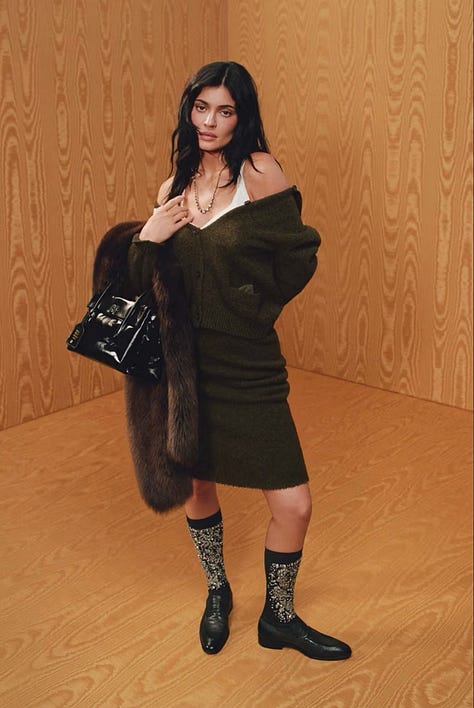
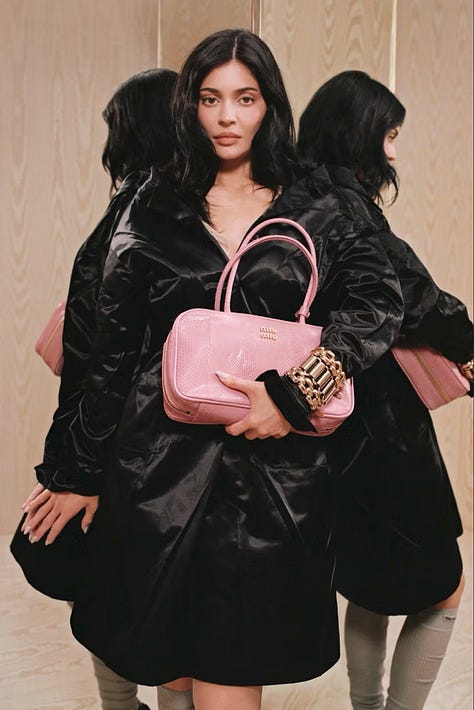
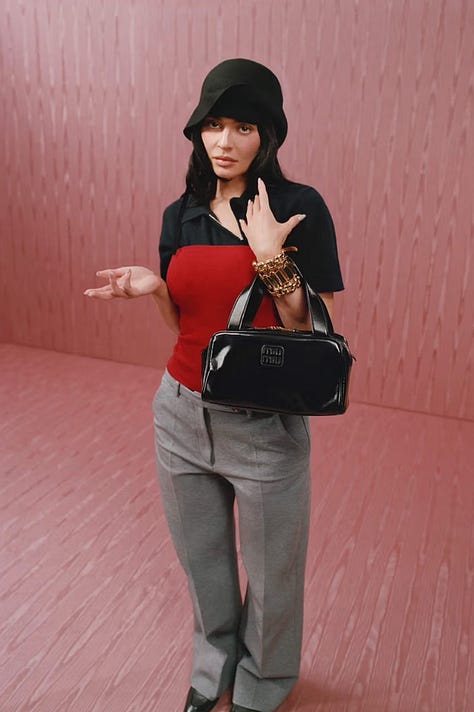
Would you look at that. Dead eyes and outfits that are anything but Kar-Jenner. When is the last time Kylie Jenner participated in an activity that required office attire? That may have been the subversive concept the creative team was going for (put the billionaire in outfits that the rest of us would wear to the office), but in the end it lands incredibly flat and seems to show the disconnect between the brand and its consumers. It seems as thought the only thought process was Miu Miu is for cool girls, Kylie is a cool girl, ergo, Kylie is our cool girl. I have never once before seen her wear flat, almond-toed loafers and a knit set your grandmother might wear to church. Rather than have the model mesh with the clothing, they seem to be hoping that the model will sell the clothing. If anyone else was wearing these looks would there be even a fraction of the hype? Are the looks even good? (I will say I do enjoy the moire backdrops.)
Rachel Brosnahan wore the red top for the Superman press tour, and I don’t think it’s a good look. So that answers that. The guys look great, though, despite David’s awkward pant length.
Emma Corin for the FW 22 campaign is an example of the correct model for the vision.
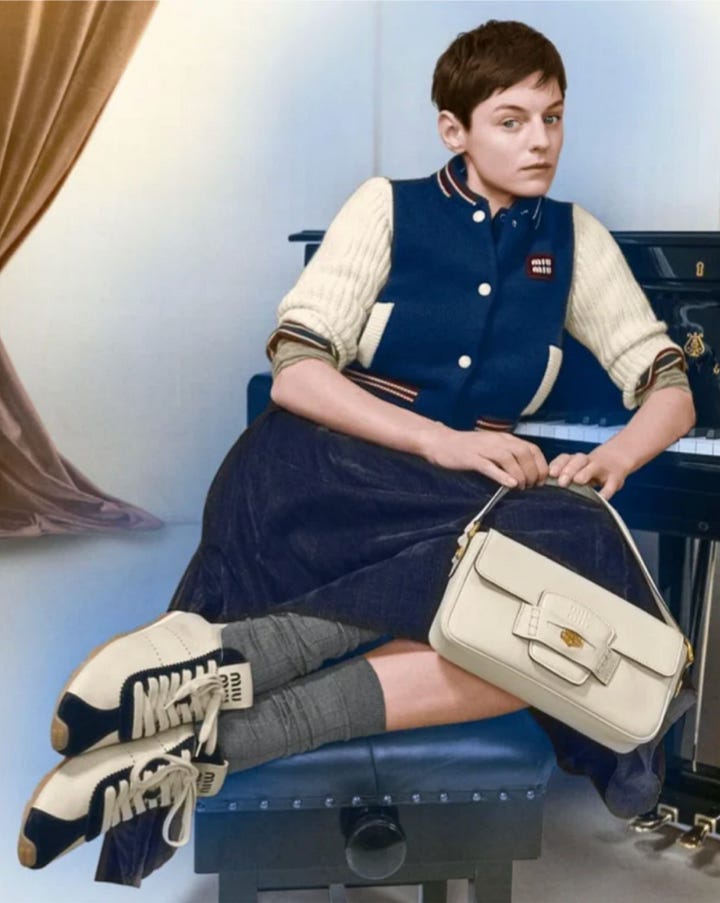
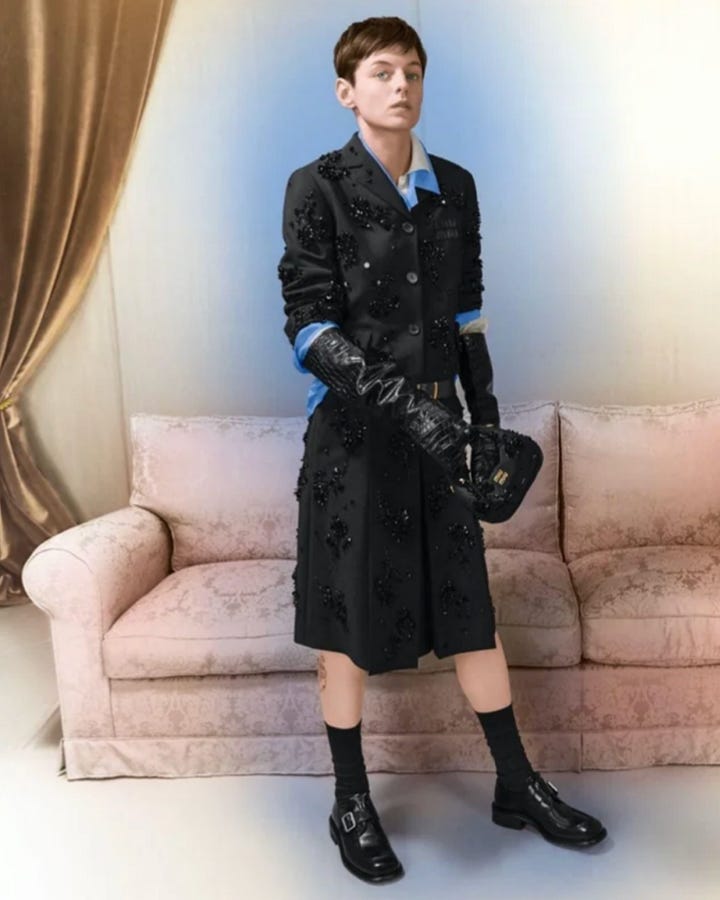
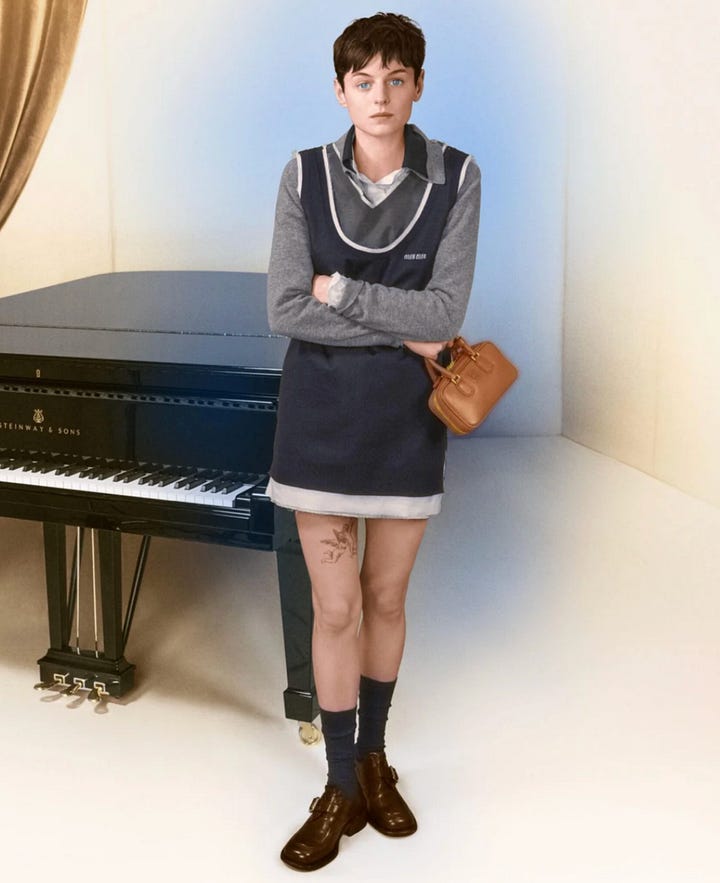
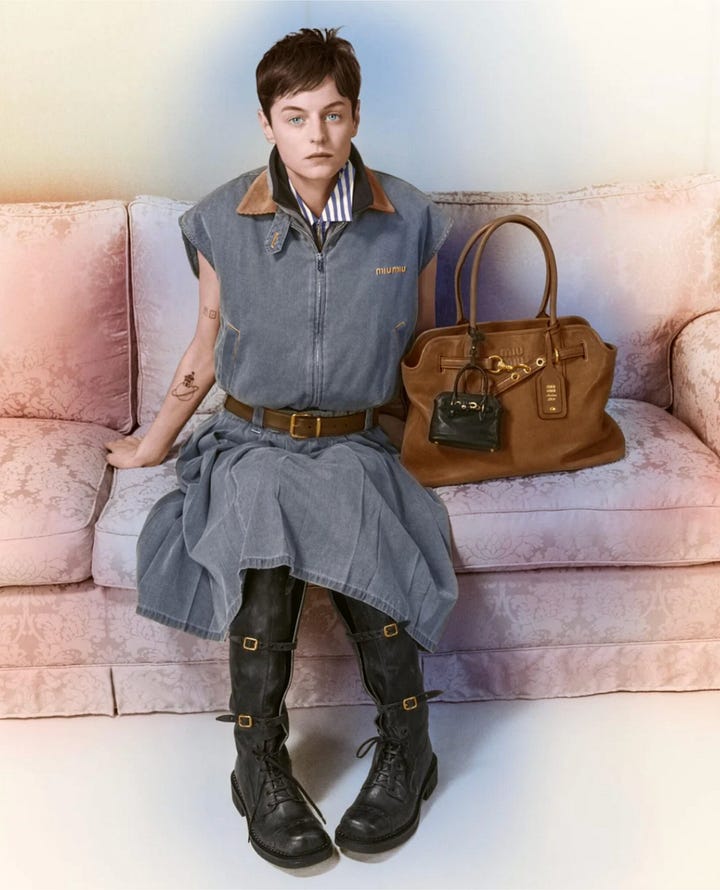
In a landscape where brands are embracing artistry and creatives and a vision, Miu Miu seems to have gotten a bit too comfortable resting on their It-girl laurels and resorting to tired, shock-factor model reveals and short-lived internet discourse driven via Instagram comment sections, relying on digital virality to drive sales, rather than delving further into their brand ethos to connect with their customers. In a time where AI is being woven into our very ability to function, to write an email, to get ourselves dressed, it’s an act of resistance and artistry to, as the phrase goes, “reject modernity and embrace tradition.” But, there are some brands who agree that the digital slop has to stop.
Ralph Lauren and Wimbledon commissioned artist Andrea Love for a felted stop-motion ad.
Burberry commissioned artist Huw Messie for a hand stitched stop-motion ad. (The skill!?) Please click the link to watch, it’s worth it.
Animator Lee Hardcastle worked with Nike on their ‘Erling Haaland - The Box Of Pain’ claymation advertisement.
May I propose Loewe x Tiny Chef? Imagine him cooking up a tiny heirloom tomato. He’s been booted from the network, so maybe he becomes a Loewe ambassador instead.
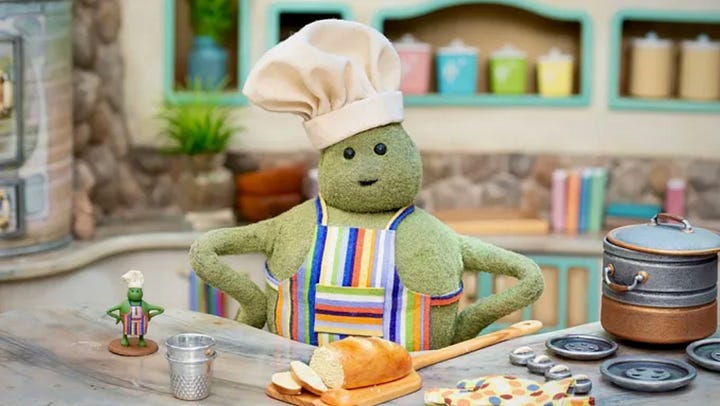

In a time of supreme optimization under the guise of productivity and efficiency, luxury (and not so luxury) brands are working to highlight their own artisan backgrounds by collaborating with artists. In an era where time=money, by producing hand-crafted advertisements brands are showing another side of luxury: time. This article from the Guardian does a great job including perspectives from a variety of fields and professions. Emine Saner writes, “Some studios, such as the animation company Studio Ghibli, have sworn off using AI, but others appear to be salivating at the prospect. In 2023, Dreamworks founder Jeffrey Katzenberg said AI would cut the costs of its animated films by 90%. Bateman thinks audiences will tire of AI-created content. ‘Human beings will react to this in the way they react to junk food,’ she says. Deliciously artificial to some, if not nourishing – but many of us will turn off. Last year she set up an organisation, Credo 23, and a film festival, to showcase films made without AI. She likens it to an ‘organic stamp for films, that tells the audience no AI was used.’ People, she says, will ‘hunger for something raw, real and human’.” And boy are we hungering. We crave connection, and brands like Ralph Lauren are proving just why they have continued to stick around for decades. They speak to a deeper ethos, one they have carried throughout all of their collections. Their ambassadors are a relevant representation of the brand, rather than the brand molding to fit the ambassadors. Miu Miu instead targets a younger demographic, and rather than trying to revamp their digital platform to push boundaries and challenge their audience, they’ve resorted to online discourse to peddle their goods to trend-focused, influencer-types through clothing that lacks any specific perspective. (This does not apply to all collections, but it seems that this is the direction they are going in.) For example: Alix Earle. This is peak influencer culture.
Saner continues, delving deeper into the emotional disconnect we are willingly engaging in, writing, "Capitulating all kinds of decisions like where to go on vacation, what to wear today, who to date, what to eat. People are already doing this. You won't have to process grief, because you'll have uploaded photos and voice messages from your mother who just died, and then she can talk to you via Al video call every day. One of the ways it's going to destroy humans, long before there's a nuclear disaster, is going to be the emotional hollowing-out of people."
We’ve been sold a beautiful future - let the computer get you dressed. The future Clueless promised us, but better, because the computer can process and compile information and talk back and think for you. Ask chatGPT to match the vibes of your vacation destination. Have it spit out color combinations and themes and tell you how the locals dress. Why are we pretending that our optimization is anything other than outsourcing personal style to a computer? “They're trying to convince people they can't do the things they've been doing easily for years - to write emails, to write a presentation. Your daughter wants you to make up a bedtime story about puppies - to write that for you." We will get to the point, she says with a grim laugh, "that you will essentially become just a skin bag of organs and bones, nothing else. You won't know anything and you will be told repeatedly that you can't do it, which is the opposite of what life has to offer." (Saner, The Guardian)
Getting dressed should be something that expands your personal experience and worldview, not limits it. But we’ve gotten to the point where we’re doing too much without actually accomplishing anything. What do our outfits say if they were specifically curated to precisely match their backdrops? Is that personal style, or is it the erasure of exactly the thing we are chasing? Are we instead putting limitations on ourselves under the guise of curation? Personal style is about experimentation, and basing our wardrobes off of data compiled by a computer takes away from the exercise and practice that eventually becomes second nature. We have to learn what we like through trial and error and play, not through the highly filtered lens of an algorithm. It’s nearly impossible for me to reconcile how removing the research aspect of the development process is helping us discover ourselves. We were always told that it is about the journey not the destination, but what happens when you are sold a life where the destination is all that matters? We end up in a continuous loop of hunting for external validation, and it’s a hell of a lot easier to offload the time-consuming elements of compiling sources and finding references to a machine. But all this does is limit our abilities to connect ideas and concepts and discover elements we are drawn to if all we see is the final product. (I feel like my mom yelling, “it’s the damn phones!!!”)
I see a lot of posts on this site lauding the use of AI to ease in writing, whether it be creating outlines or finding sources or acting as a launching pad to come up with concepts. I write because I have something to say, so giving this up to AI is antithetical to the whole process. I do research so I can learn. Why would I want a computer to tell me what to write about and how to write it? Why would I want the computer to do the work for me? I’m anti-AI, can you tell? Not only for our brains sake, but for our environment and society and the rights we should have to our own data and art. So next time you want to ask AI to make you an outfit, try doing your own research to see what speaks to you. And maybe brands will start listening to us and leave the algorithm behind in favor of an actual direction.





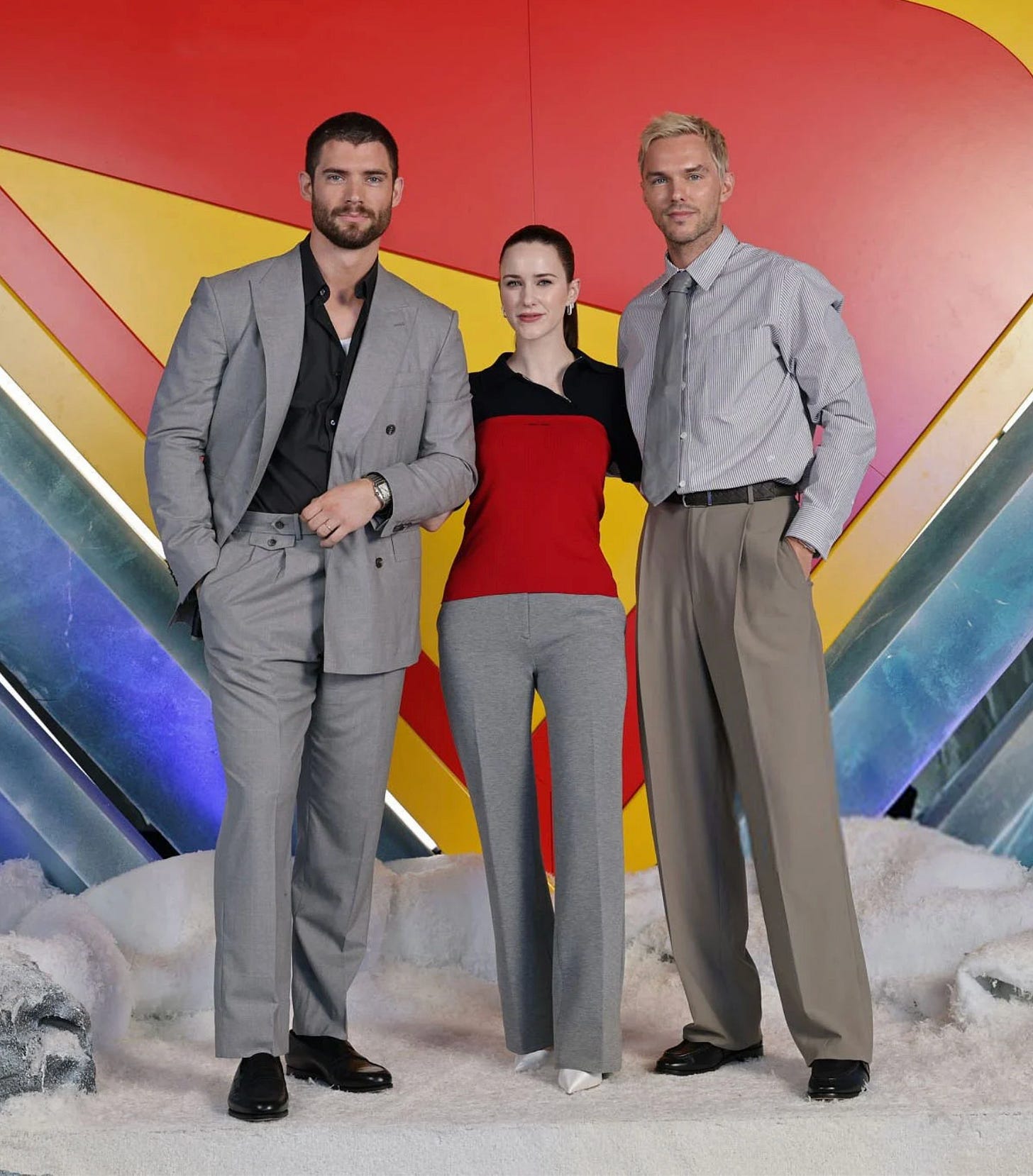
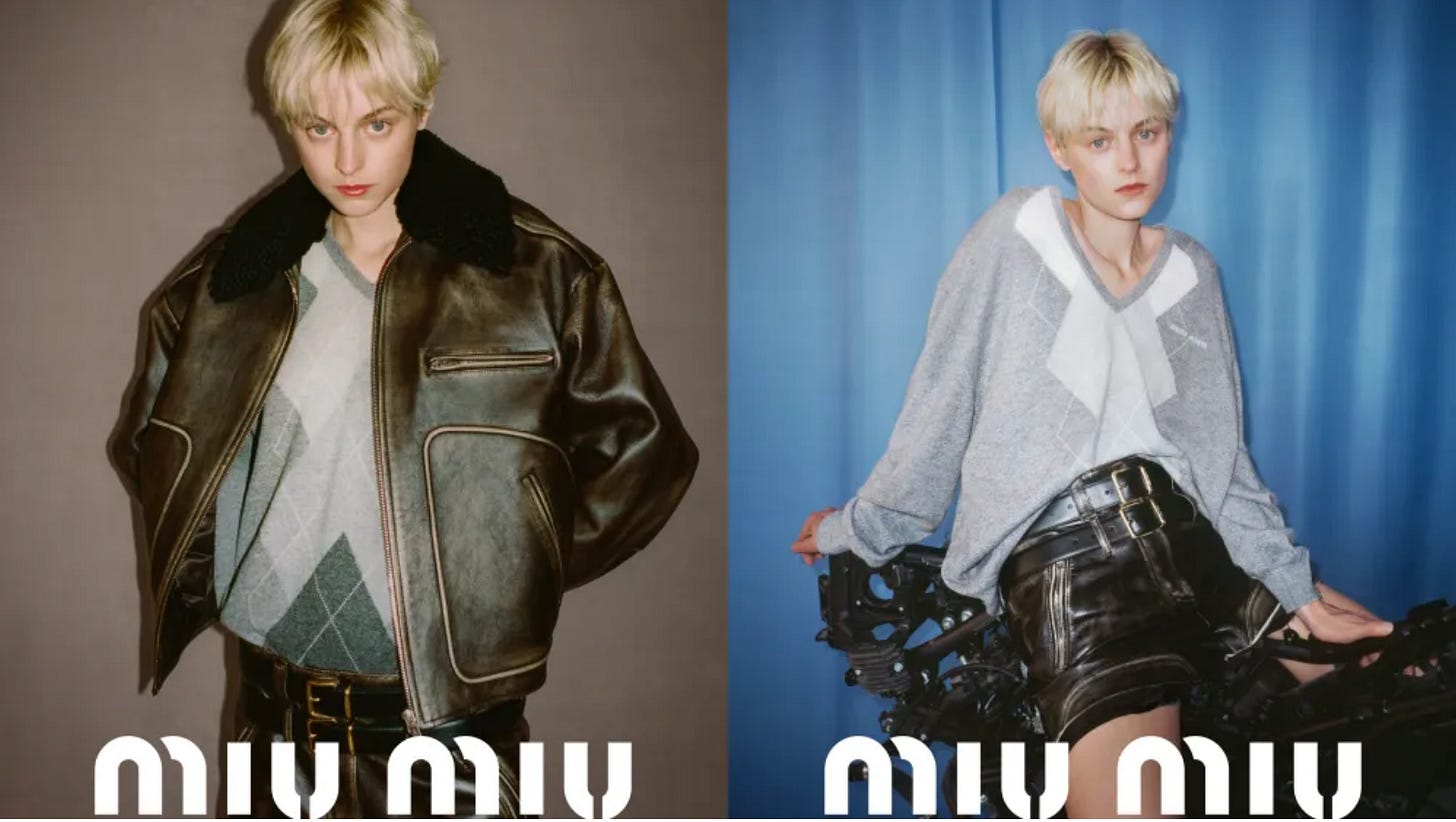


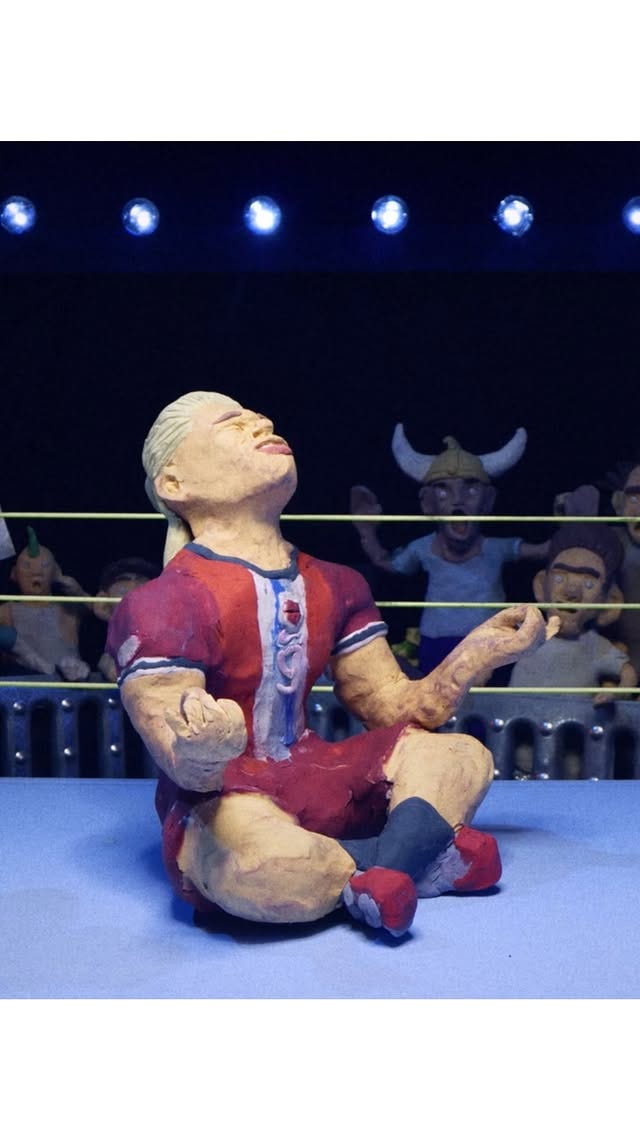
I’ve been reading a bunch of articles about the danger of algorithmic personal style, especially as we move into Fall 2025. I have to admit, I’ve definitely fallen victim to it in the past. Lately, I’m really trying to move toward self-discovery and dressing in a way that FEELS good and right for me (I know that sounds cliché and a little cringe, but it’s true).
In a world where we’re constantly surrounded by influence, it’s harddd, but I think I’m starting to build the toolkit to get there! Really enjoyed this read.
Great read!!! We use AI and online tools out of convenience, so that we can make time for "other things". And it turns out the "other things" are just scrolling on your phone...
The brain is a muscle, and the more we use AI to do the leg work for us, the weaker we get.